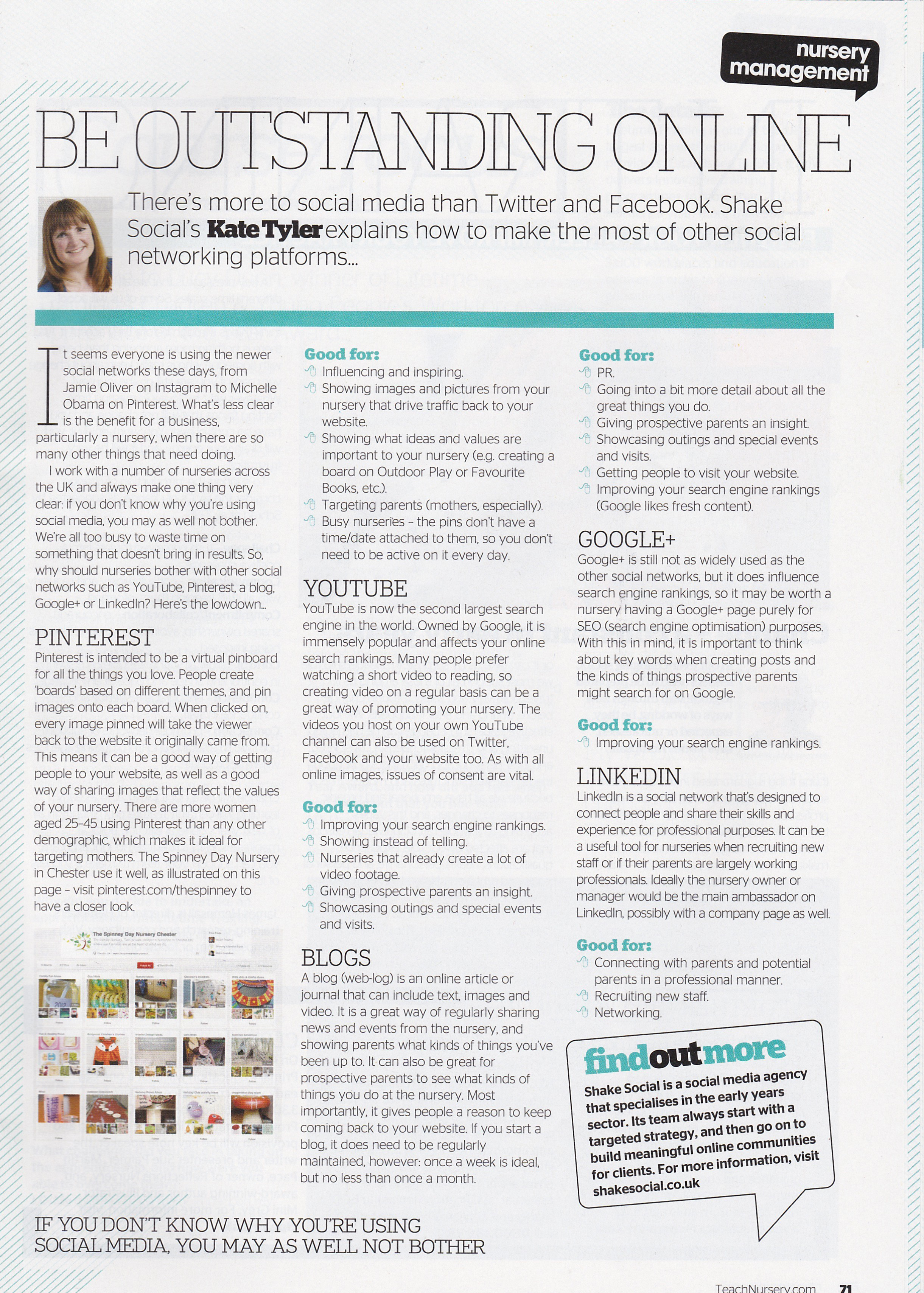
It seems everyone is using the newer social networks these days, from Jamie Oliver on Instagram to Michelle Obama on Pinterest. What’s less clear is the benefit for a business, particularly a nursery, when there are so many other things that need doing.
We work with a number of nurseries across the UK and we always make one thing very clear: if you don’t know WHY you’re using social media, you may as well not bother. We’re all too busy to waste time on something that doesn’t bring in results. So, why should nurseries bother with other social networks such as YouTube, Pinterest, a blog, Google+ or LinkedIn?
Here’s the lowdown…
Pinterest is intended to be a virtual pinboard for all the things you love. People create ‘boards’ based on different themes, and pin images on to each board. Every image pinned will take the viewer back to the original website that the picture has been taken from when clicked on. This means it can be a good way of getting people to your website, as well as a good way of sharing images that reflect the values of the nursery. There are more women aged 25-45 using Pinterest than any other demographic which makes it ideal for targeting mothers. The Spinney Day Nursery in Chester use it well:
Good for:
- Influencing and inspiring
- Showing images and pictures from the nursery that drive traffic back to your website
- Showing what ideas and values are important to the nursery (eg. Creating a board on Outdoor Play or Favourite Books etc)
- Targeting parents (mothers especially)
- Busy nurseries – the pins don’t have a time/date attached to them so you don’t need to be active on it every day
YouTube
YouTube is now the second largest search engine in the world. Owned by Google, it is immensely popular and affects your online search rankings. Many people prefer watching a short video to reading so creating video on a regular basis can be a great way of promoting your nursery. The videos you host on your own YouTube channel can also be used on Twitter, Facebook and your website too. As with all online images, issues of consent are vital.
Good for:
- Improving your search engine rankings
- Showing instead of telling
- Nurseries that already create a lot of video footage
- Giving prospective parents an insight
- Showcasing outings and special events and visits
Blogs
A blog (web-log) is an online article or journal that can include text, images and video. It is a great way of regularly sharing news and events from the nursery and showing parents what kinds of things you’ve been up to. It can also be great for prospective parents to see what kinds of things you do at the nursery. Most importantly, it gives people a reason to keep coming back to your website. If you start a blog, it does need to be regularly maintained however. Once a week is ideal – but no less than once a month.
Good for:
- PR
- Going in to a bit more detail about all the great things you do
- Giving prospective parents an insight
- Showcasing outings and special events and visits
- Getting people to visit your website
- Improving your search engine rankings (Google likes fresh content)
Google+
Google+ is still not as widely used as the other social networks, but it does influence search engine rankings so it may be worth a nursery having a Google+ page purely for SEO purposes. With this in mind, it is important to think about key words when creating posts and the kinds of things prospective parents might search for on Google.
Good for:
- Improving your search engine rankings
LinkedIn is a social network that’s designed to connect people and share their skills and experience for professional purposes. It can be a useful tool for nurseries when recruiting new staff or if their parents are largely working professionals. Ideally the nursery owner or manager would be the main ambassador on LinkedIn, possibly with a company page as well.
Good for:
- Networking
- Recruiting new staff
- Connecting with parents and potential parents in a professional manner
Shake Social are a social media agency that specialize in the early years sector. We always start with a targeted strategy, and then go on to build meaningful online communities for clients.
This article first appeared in Teach Nursery Magazine (Summer 2014).

